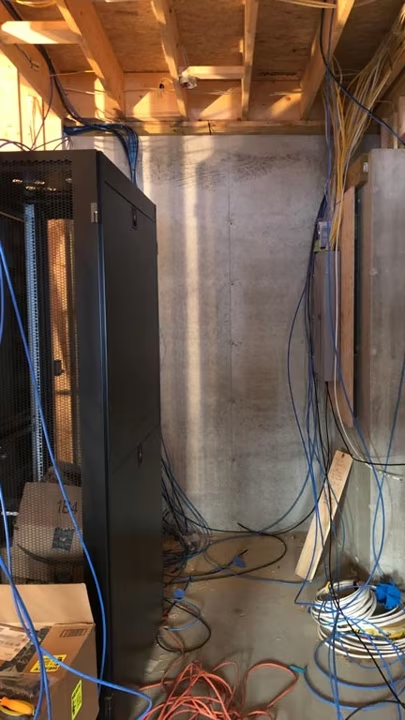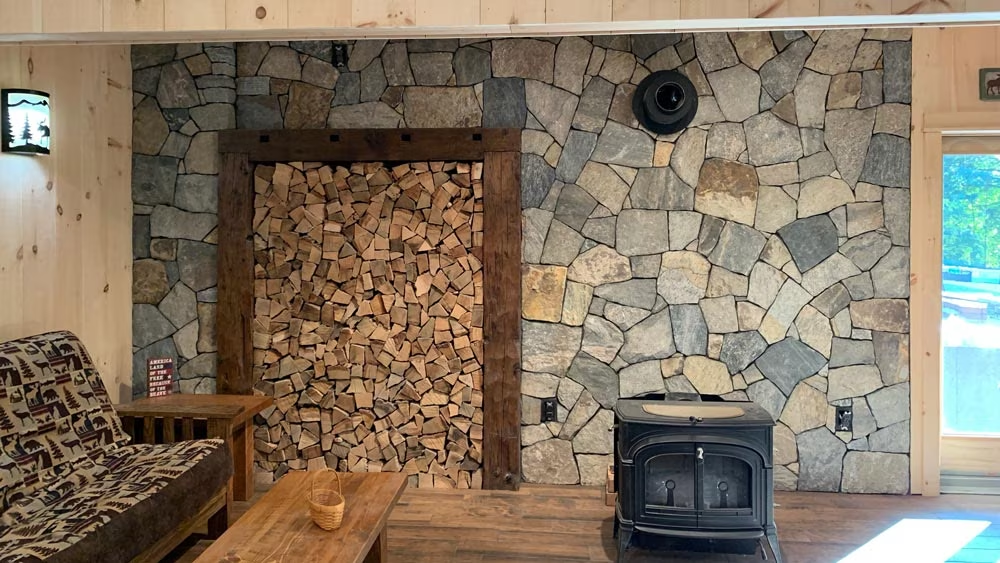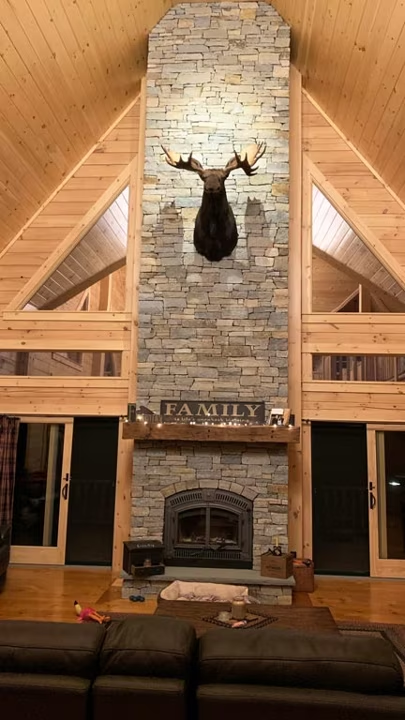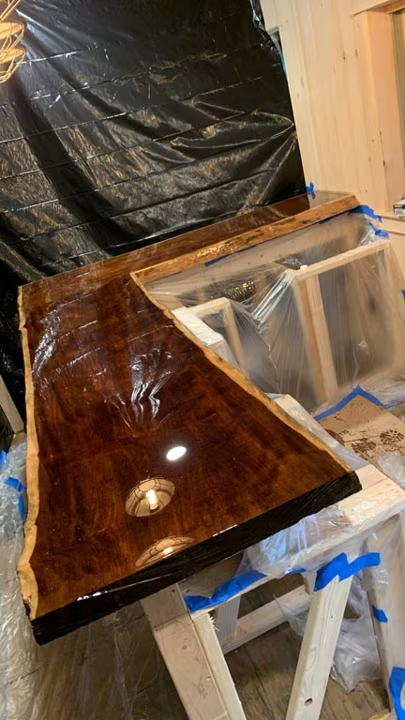Photos courtesy of Jim Ducharme
When Jim and Michele Ducharme embarked on their quest to build the log home of a lifetime on their old family property near the Salmon Falls River in southwestern Maine, they didn’t anticipate doing much of the work themselves.
“To save money, we put a lot of sweat equity into the last home we built,” Jim reflects, “but this time, we decided the project was big enough that we wanted to leave the vast majority of the ‘heavy lifting’ to the professionals.”
See also: What to Expect When You’re Expecting to Build a Log Home
Yet when the opportunity arose, there were a few projects the couple simply couldn’t resist putting their own touch on — literally. Their participation began with the decision to give some old wood a great second act.
“The first thing was extracting, cleaning and refinishing reclaimed timbers from the old farmhouse on the property that we wanted to repurpose in the new house,” Jim relates. “We leveraged these reclaimed timbers in a few areas of our new home — our fireplace mantel, the bar in my man cave and a decorative wall in the basement. While we were tearing down the old house, we went in with chainsaws and cut out the nicest timbers from it, cleaned them up and refinished them. We did this mostly so we could get the exact look we wanted out of those timbers.”
Next came the installation and connection work for smart-home functionality. Jim has experience in this type of networking installation, and the opportunity to incorporate it into his home fit perfectly with his skill and comfort level. “I knew what I wanted and how I wanted it all to work,” he comments, “so I ran over 1,500 feet of CAT6A cables through the home to network the entire house, my equipment rooms, as well as a mesh Wi-Fi system and in-wall/ceiling speakers for my entertainment areas in the basement.”
The benefits of the “smart home” concept are readily apparent to Jim and Michele. Convenience and comfort are available with the simple sound of a recognized voice.
“It means we can control just about every light in our home and even doors and locks and many other devices through voice or put them on schedules to turn on/off or even control remotely when we’re not at home,” explains Jim. “For example, at sunset our outdoor lighting turns on automatically, and some of our great room lights turn on so we aren’t left in the dark. When we’re ready for bed, we simply tell our home-automation system ‘good night,’ and it ensures that all the doors are locked, closes any garage doors we forgot to close and turns off any lights we may have left on.”
Even the Ducharmes’ swimming pool is enhanced and maintained by smart devices that regulate temperature and provide alerts for chemical treatments to keep the water clean. Smart alarms are a planned addition to keep children safe around the pool, ensuring that they don’t wander into the area unsupervised.
Efficiency and security are major benefits of smart-home tech, too. The HVAC system can be adjusted by voice or controlled from anywhere when Jim and Michele are away. Water monitoring keeps track of usage from the well and detects any issues such as leaks, faulty toilet apparatus or a ruptured pipe. Alerts come through mobile devices, so prompt action can be taken if necessary. Electrical usage is also monitored and provides data on efficiency, allowing changes to any appliance or system that might over-consume or need regulation.
See also: 15 of Our Smartest Hacks for Small Log Homes
Motion detectors and cameras are located throughout the property, and smart locks warn of any attempt at unauthorized entry. “We can answer the doorbell no matter where we are through our mobile devices and lock and unlock the doors in case we need to let in a contractor or dog sitter while we’re away,” says Jim. “Our smoke detectors will send notifications to our phones, too, which is handy if we aren’t at home.”
For those planning to install smart-home features, Jim and Michele recommend planning early in the construction process, working with an electrician who is familiar with the technology’s needs and considering which features, both large and small, will add value in leisure living.
See also: Plan Your Forever Home
“A smart home does depend on having a home network,” advises Jim, “typically a Wi-Fi network. When planning, it’s best to think through the experience you want to have in interacting with lights and devices in your home or what smart features you will find helpful. Just about everything can be automated, from alerting you that the freezer door is open or your clothes dryer has finished to reminding you when to flip the burgers on the grill.”
Now that’s a smart idea.
Next Installment
We’re almost done! Find the grand finale (aka, the full home tour!) in the August 2023 issue.


















